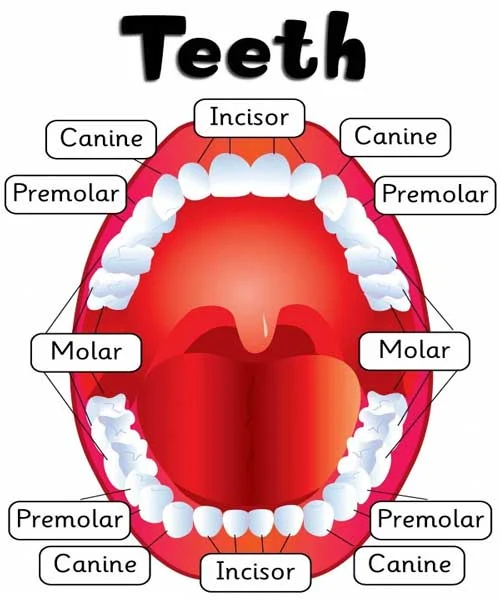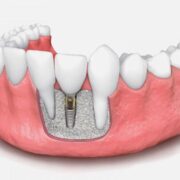Process of tooth regeneration includes promoting body’s innate capacity to develop new teeth to provide remedy for tooth loss in dentistry. To encourage the formation of new teeth, scientists are experimenting with a variety of techniques, such as tissue engineering and stem cell treatment. This may point to a day in the future when it will not be required to remove teeth in order to replace missing or damaged ones with new, healthy ones. In this post, we will examine the possibility of tooth regeneration and the fascinating developments taking place in this subject. The potential for tooth regeneration is becoming more real as dental technology and research continue to develop.
Current State of Tooth Regeneration Research
It is crucial to comprehend the present status of research in this area in order to fully appreciate the potential of tooth regeneration. Although there have been considerable advances in research on it, there is still much to learn about this topic.
Understanding the cellular and molecular mechanisms behind tooth formation has advanced significantly. Scientists have learned more about how teeth form and develop in the human body by researching the genetic and epigenetic elements that affect tooth formation.
Stem cells are a potential field of study. The capacity of stem cells to develop into multiple cell types, including tooth cells, makes them particularly special. Dental stem cells from both infant and adult teeth have been isolated by scientists. Enamel, dentin, and pulp of the teeth, as well as other dental components, have the capacity to regenerate thanks to these stem cells.
Understand structure of a Tooth before Regeneration
It’s important to grasp the fundamentals of tooth anatomy before getting further into tooth regeneration. A tooth’s structure may be divided into a number of essential parts, each of which serves a distinct purpose.
Here is a basic explanation of the major dental components:
The crown is the portion of the tooth that is visible above the gum line. Enamel, the toughest component in the human body, covers it and acts to protect the layers underneath.
The enamel covers the majority of the tooth’s crown. It is heavily mineralized and serves as a barrier against deterioration, acids, and germs.
The bulk of the tooth’s structure is made up of the hard tissue called dentin, which is located underneath the enamel. Even though dentin is not as tough as enamel, it is still quite robust. Small tubules in it link to the inner pulp.

The pulp, which is found in the dentin’s middle, is the tooth’s inside. It is made up of cells, connective tissues, blood vessels, and nerves that support and protect the tooth. The pulp is involved in both pain and temperature perception.
The part of a tooth that is buried in the jawbone is known as the root. It serves as the tooth’s anchor and is covered with cementum, a protective coating. Pulp tissue may be found in the root canal, a chamber within the root.
Cementum serves to bind the tooth’s root to the jawbone by covering it. Although less durable than enamel, it nonetheless offers vital support.
Factors That Affect Tooth Regeneration in Dentistry
Age is one of the most important elements. With aging, teeth lose some of their natural capacity to repair. The capacity for tooth regeneration declines with age, making the procedure more difficult.
Additionally, a person’s general health has a big impact on how quickly their teeth grow back. The healing process might be hampered by diseases like diabetes and gum disease, since oral and systemic health are interrelated. To optimize the chance of tooth regeneration, it is crucial to practice proper dental hygiene and take care of any underlying medical conditions.
The degree of tooth loss or destruction is another thing to take into account. For those who have had severe tooth loss or significant damage to their dental tissues, tooth regeneration may be more difficult. To help the regeneration process in such circumstances, further interventions—such as tissue engineering or the use of dental implants—might be required.
Emerging Technologies in Dentistry
An interesting area of study that has the potential to transform dental treatment is tooth regeneration. Although achieving total tooth regeneration in humans remains a difficult goal, a number of cutting-edge technologies and strategies have the potential to further tooth regeneration efforts. The following are some important new developments in tooth regeneration technology:
Biomaterials and Growth Factors
A favorable environment may be created for tooth regeneration using advanced biomaterials like hydrogels and nanoparticles.
Stem cells may be encouraged to differentiate into tissues specific to teeth by growth factors like TGF-beta and BMP-2 (transforming growth factor beta).
Gene Therapy for Tooth Regenration
Genes involved in tooth growth and regeneration may have their expression altered via gene therapy techniques. Genetic alterations linked to oral problems may be corrected using targeted gene editing techniques.

Stem Cell-Based Therapies
The regeneration potential of dental follicle stem cells (DFSCs), dental pulp stem cells (DPSCs), and other stem cell types is being investigated. Dentin, pulp, and even enamel are just a few of the dental tissues that these cells may develop into.
Dental stem cells may be reprogrammed from induced pluripotent stem cells (iPSCs) created from a patient’s own cells and utilized for individualized tooth regeneration.
Tissue Engineering in Tooth Loss
To generate functioning tooth structures, tissue engineering mixes cells, biomaterials, and growth factors. In order to create a full tooth, researchers are striving to separate the pulp, dentin, and enamel tissues.
Challenges and Limitations in Tooth Regeneration
Inability to Regenerate Enamel
When enamel, the tooth’s outer coating, is destroyed or damaged, it cannot normally grow back. Dentin and pulp regeneration are often the focus of current regeneration treatments, leaving enamel out.
Alignment and accuracy
A hurdle still exists in getting regenerated teeth to effectively occlude and align with neighboring natural teeth for efficient eating and biting.
Structure of the Tooth Complexity
Enamel, dentin, pulp, and cementum are only a few of the many tissue types found in teeth, which are very complex structures. It is difficult to regenerate all of these tissues and ensure optimal integration.
Adults with Limited Regenerative Capacity
Age severely reduces a tooth’s ability to regenerate. Adults have a lower capability for tooth regeneration than children and young adults do. Children and young adults also have a stronger capacity to restore dental tissues.
Future Prospects in Tooth Regeneration
The potential for tooth regeneration is tremendously bright, and there are a lot of intriguing possibilities ahead. We may anticipate further developments and advances in tooth regeneration methods as researchers continue to make strides in the field of dentistry.
The creation of new biocompatible materials and scaffolds for tooth regeneration is one topic for further study. The success rate and long-term viability of tooth regeneration treatments would be increased by these materials, which would provide an ideal environment for dental cells to develop and regenerate.
Nanotechnology’s potential for use in tooth regeneration is also quite promising for tooth loss. To increase the efficiency and efficacy of the regenerative process, nanoparticles may be employed to transport growth factors and other bioactive compounds specifically to the location of tooth regeneration.
We may anticipate more multidisciplinary partnerships between dentists, scientists, and engineers as the subject of tooth regeneration develops. These partnerships will make it easier for people to share information and ideas, which will result in more creative and revolutionary developments in tooth regeneration.
Conclusion
Regenerating teeth has the potential to completely change the dentistry industry. With improvements in tissue engineering, stem cell treatment, and developing technology, the prospect of producing new, healthy teeth is becoming more and more real. In addition to enhancing oral health, aesthetics, and general quality of life, tooth regeneration may provide a more long-lasting and all-natural solution to tooth loss and damage. Although there are obstacles to overcome and moral questions to answer, tooth regeneration has a lot of promise for the future. Dentures and dental implants may soon become a thing of the past as researchers continue to explore the possibility of tooth regeneration. Instead, we may welcome a day when it is possible to regenerate teeth.
ABOUT
Dr. Chirag Chamria, Oral & Maxillofacial Surgeon
With significant training in zygomatic implants, cosmetic dentistry, orthognathic surgery, complete mouth reconstruction, and oral cancer rehabilitation, Dr. Chirag Chamria is a Certified Oral and Maxillofacial Surgeon. It is a pleasure for Royal Health Care Pvt. Ltd. to have Dr. Chirag as its director and maxillofacial surgeon. He works at Royal Dental Clinics as an attending physician and a top dentist in Mumbai, specialising in oncology, facial aesthetics, and cosmetic dentistry. At the University Medical Center of the Netherlands in Europe, Dr. Chirag finished his advanced “cancer surgery” studies. His current work is focused on “Salivary Organ Sialography” from Geneva’s University of Switzerland. Dr. Chirag Chamria specialises in surgical planning for the majority of dental and oral surgery treatments in dentistry.






